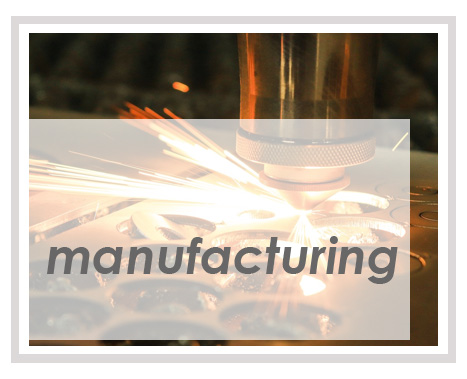Research Projects
Remediation technology Thermo-bio-rem
The thermo-bio-rem technology is based on the thermally supported in-situ anaerobic bioremediation of chlorinated contaminants, during which chlorinated ethenes turn via sequential hydrogenolysis to non-toxic ethene and ethane. This metabolic process is significantly accelerated by raising the temperature of the aquifer to an optimal level of 20 to 30 ° C. Significant portion of energy needed to heat the aquifer is obtained from solar energy. The technology was developed under co-funding by the Czech Technology Agency (TACR, project no. TH01031225) and verified in real conditions of 2 sites. The outcome of the project is the verified remediation technology.
Remediation technology Biofer-rem
The Biofer-rem remediation technology is based on the application of iron microparticles and an easily fermenting substrate to the contaminated rock environment. This creates favorable thermodynamic conditions (1) for abiotic and biological reduction of contaminating chlorinated ethenes and (2) for the formation of FeSx-based reactive minerals that are also characterized by the ability of abiotic decomposition of contaminants. This remediation technology is particularly suitable for locations with high content of sulphates. The technology was developed under co-funding by the Czech Technology Agency (TACR, project no. TH01030851 “BIOGEOCHEM”) and tested by a long-term pilot test. The output of the project is the verified technology and a functional sample of the remediation agent.
Automatic circulation system for groundwater remediation
The circulation system enables active and remote controlled delivery of remedial agents into the ground. It leads to a homogenous distribution of the agents and consequently limits a rebound of contaminant concentration, reduces remedial time and an overall consumption of the agents. On-line monitoring of key parameters and remote control enables the project manager to respond flexibly to the progress of remediation and thus makes it more efficient. The circulation system has been successfully verified in a field application at a site contaminated by chlorinated solvents. The system was developed under co-funding by the Czech Technology Agency (TACR, project no. TA04021725) and is registered as the utility model no. 29656.
Combined nano-bio technology to remove hexavalent chromium from groundwater
Nano-Bio-Rem technology developed under co-funding by the Czech Technology Agency (TACR, project no. TA01021792) is based on the subsequent combination of abiotic reduction by nanoiron and biological reduction of hexavalent chromium Cr(VI). High efficiency of this remediation method for permanent removal of Cr(VI) from groundwater has been confirmed in laboratory conditions as well as by a pilot test. This technology represents an environmentally friendly remediation method as no harmful substances are introduced to the ground and does not results in any long term adverse changes in the natural hydrochemical composition of groundwater or its microbial properties. The outcome of this research project was a verified technology and registered utility model no. 28 124.
Controlled in-site oxidation (RISCO) using combination of chemical oxidation and surfactants application for remediation of groundwater impacted by chlorinated hydrocarbons
RISCO technology was verified jointly with the main holder of the project, the company DEKONTA, in the framework of the Research and Development project of the Ministry of Industry of the Czech Republic (Project FR-TI1/244). This technology is based on a sequential in-situ application of a surfactant and a strong oxidizing agent (activated persulfate) and is suitable for remediation of sources of groundwater contamination by chlorinated hydrocarbons with the presence of DNAPL. The efficiency of this remedial method was verified through four pilot tests.
Bioremediation of explosives (TNT)
This remedial method was developed in cooperation with the main holder of the project, the company DEKONTA, in the framework of the Research and Development project of the Ministry of Industry of the Czech Republic (Project FR-TI1/237). The outcome of this project is the in-situ method using biodegradation potential of autochthonic organisms for remediation of the trinitrotoluene (TNT). The efficiency of this remedial method was verified through two pilot tests conducted at a real contaminated site.
Controlled biological reductive dechlorination using side products from food industry for remediation of groundwater impacted by chlorinated solvents
ENACON was a co-researcher of the Research and Development project cofounded by the Ministry of Industry of the Czech Republic (Project FI-IM2/086). In cooperation with the main project holder, the company DEKONTA, a new biological method was developed that is based on the sequential halorespiration of autochthonic microorganisms and intensification of this process by adding a suitable substrate. The outcome of this project was patent no 300088.
Development of the software tool (toolbox) for optimizing subsurface remediation, 2009-2011
The software was developed in the framework of the Research and Development project of the Ministry of Industry of the Czech Republic (Project FR-TI/555). It allows interpretation, balancing and visualization of the results of site investigations and, in addition, design, assessment and optimization of methods for the subsurface impact remediation. The main benefit of this tool is more efficient process of the selection of the most appropriate method for the site remediation with respect to its future use and cost related to clean up to levels complying with the planned uses.
Sustainable Soil Upgrading by Developing Cost-effective Biochemical Remediation Approaches, 2009-2012
The project was a part of the 7th Framework EU Program (project coordination by Fundación Labein, Spain). The objective of the project was to develop remedial methods suitable for remediation of chlorinated hydrocarbons subsurface impact, with the emphasis on evaluation and minimizing of side effects for chemical oxidation methods.



